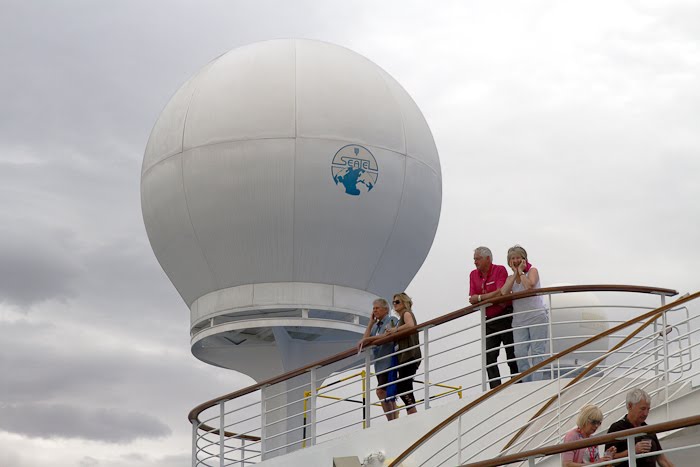On a very hot and overcast late spring afternoon we boarded our cruise ship in Port Melbourne.
 |
| © Barbara Oehring 2015 |
 |
| © Barbara Oehring 2015 |
We travelled 1,620 nautical miles from Melbourne to Auckland, our first port of call.
The day we arrived in Auckland the Christmas Parade was on.
 |
| © Barbara Oehring 2015 |
Albert Park, a restful place with magnificent trees, right in the city.
 |
| © Barbara Oehring 2015 |
 |
| © Barbara Oehring 2015 |
 |
| © Barbara Oehring 2015 |
Early next morning we arrived in Tauranga in the Bay of Plenty. The name Tauranga is a Maori word that roughly translates to "a sheltered anchorage".
We walked to the beach town of Mount Maunganui and wandered around the base track of Mauao (Mount Maunganui), a dormant volcanic cone of great cultural significance.
 |
| © Barbara Oehring 2015 |
 |
| © Barbara Oehring 2015 |
Embarkation time.
 |
| © Barbara Oehring 2015 |
 |
| © Barbara Oehring 2015 |
November 2015 marked 100 years since the death of William Fitzgerald Crawford who is best remembered for his photographs of activities of the Gisborne-East Coast region. We viewed remarkable images from the vast collection of photographs and negatives that survived.
Two beautiful examples of Maori art on display were Robyn Kahukiwa's Hinematioro, 1988, alkyd oil/enamel on canvas and H. Dickson's Bust of Heni Materoa, 1910, bronze.
 |
| © Barbara Oehring 2015 |
The next day we explored Wellington, the capital of New Zealand on North Island's southernmost point.
 |
| © Barbara Oehring 2015 |
We spent a satisfying afternoon at the Museum of New Zealand Te Papa Tongarewa. I was impressed by the beautiful space dedicated to the Treaty of Waitangi. The glass Treaty is a replica of the one signed at Waitangi on 6 February 1840 and now stored at Archives New Zealand. The Treaty is not a single page but a group of documents.
 |
| © Barbara Oehring 2015 |
This waka horua (voyaging canoe) Te Aurere Iti is a small scale replica of Te Aurere. The waka are sacred to Maori.
 |
| © Barbara Oehring 2015 |
 |
| © Barbara Oehring 2015 |
Photography at the museum was well represented by a great visual history of New Zealand: New Zealand Photography Collected, an exhibition of photographs drawn from the museum's national collection. A beautiful publication New Zealand Photography Collected was available to purchase in the museum shop.
 |
| © Barbara Oehring 2015 |
Sunrise on the way to Akaroa on South Island.
 |
| © Barbara Oehring 2015 |
 |
| © Barbara Oehring 2015 |
Akaroa , a charming village on Banks Peninsula, was the only French settlement in New Zealand.
 |
| © Barbara Oehring 2015 |
 |
| © Barbara Oehring 2015 |
The following morning our Princess ship docked in Port Chalmers near Dunedin. Dunedin, New Zealand's oldest city, is located at the head of Otago Harbour.
The Otago Peninsula is one of South Island's most significant wildlife areas. My partner and I travelled to Taiaroa Head where we experienced wildlife in its natural habitat.
New Zealand Fur seals.
 |
| © Barbara Oehring 2015 |
 |
| © Barbara Oehring 2015 |
 |
| © Barbara Oehring 2015 |
The next day was spent scenic cruising in Fiordland National Park. Fiordland is New Zealand's largest National Park. It was declared World Heritage Area in 1986.
 |
| © Barbara Oehring 2015 |
Much of Fiordland's indigenous temperate rain forest clings to steep faces of rock.
 |
| © Barbara Oehring 2015 |
 |
| © Barbara Oehring 2015 |
 |
| © Barbara Oehring 2015 |
After a few days at sea our cruise ship reached Melbourne. We had travelled a total distance from Melbourne to Melbourne of 3.910 nautical miles in 13 days.
